New Kid on the rack.
SHORTLY before 8 a.m. on a recent Tuesday morning, Christopher LaPolice was on the fifth floor of Saks Fifth Avenue, two hours before the store was to open. In a ritual that unfolds at the store each morning, the displays were cluttered with rolling racks and unopened cardboard boxes, and four young men were sorting through and stocking the latest Marc by Marc Jacobs dresses and cotton-candy-colored fake fur bomber jackets from Juicy Couture.
Then the men looked up at Mr. LaPolice.
“Vince is in the house!” one shouted. The boyish-faced Mr. LaPolice, dressed in a khaki cotton blazer and slim blue jeans, is a familiar early-morning visitor to the behind-the-scenes employees of stores like Saks, Bloomingdale’s, Barneys New York and Bergdorf Goodman, all of which carry a prominent display of Vince, Mr. LaPolice’s five-year-old sportswear line.
As president of the company, which makes one of the hottest labels in a competitive department known as “contemporary” in retail parlance, he is often there to review the latest displays of Vince cashmere sweaters, velvet dresses and rolled corduroy shorts as soon as they arrive from factories and distribution centers. He knows the names of the security guards, the display stylists and the men responsible for restocking the shelves, congratulating Jesse, Marc or Max on a great week of sales. Some nodded. One sheepishly gave a thumb’s up. It was nice to be acknowledged, even if selling the clothes was not their job.
“These people can make or break you,” Mr. LaPolice said, sotto voce, as he began a similar review of his competitors’ displays. “If you are nice to the support team, they’ll process your clothes first, and if you are nice to the visual team, you might get four extra mannequins.”
Because of his exuberance, a lot of people assume Mr. LaPolice, 46, is Vince, but Vince is actually a made-up name, inspired by the California designer Cynthia Vincent, who helped start the label in December 2001 but left after a few months. “A lot of customers want to have a designer they can associate with the product, so we called it Vince,” Mr. LaPolice said. The current creative backbone is Micheline Ip, a former designer for the contemporary label Laundry by Shelli Segal, where Mr. LaPolice once sold sportswear and where he met his business partner, Rea Laccone, who started Laundry in 1988 and built it into a major business.
According to Mr. LaPolice and Ms. Laccone, Vince’s founders, the company was supposed to be the antithesis of a big fashion business. Both Mr. LaPolice and Ms. Laccone were burned out after their experience at Laundry, which involved constant travel and interaction with stores and customers to stay on top of the latest trends. Just after the 9/11 attacks, they decided to start a small company that would be more personal, designing clothes that they would want to wear themselves. In the immediate aftermath of the attacks, the apparel industry generally suffered as consumers turned to home and personal entertainment. Vince’s founders seemed to acknowledge this with their design concept, which could be described as the fashion equivalent of comfort food.
“I would have been really happy if Vince was a $12 million business,” said Ms. Laccone, the company’s chief executive, envisioning a very niche business. “It would have been no effort to do what we really loved.” Instead of promoting a designer, the standard method of building a fashion brand over the last 30 years, Vince focused on the products: cashmere hoodies, pants made of luxury fabrics but cut in relaxed silhouettes, simple T-shirts that fit well — all items harder to find in department stores than you might guess.
Last fall, Vince displays were filled with tonal striped cashmere sweaters that were so popular they were repeated this season in a deep-V-neck silhouette. Now the same tonal stripes are turning up in advertisements for Banana Republic and in collections as diverse as those of Karl Lagerfeld and one called Love from Ya-Ya. Mr. LaPolice does not take credit for starting the trend, but for reacting more quickly than others when such stripes were first shown by Marc Jacobs.
“Vince has a way of picking up the newest trends and styling them for the contemporary customer in a way that is so right that a lot of customers want to know who Vince is,” said Jill Heller, the owner of On the One, a three-year-old designer store in Mount Kisco, N.Y. “We just ordered a big program in cashmere wrap jackets for fall and sold every piece, and that was in July and August.”
The collection is now sold in 400 stores around the country with annual sales of $50 million, more than four times its original plan. It was also introduced in Japan this summer in a licensing agreement with the Itochu Corporation, the Japanese trading company, and next fall, Vince will start a men’s collection. The company’s rapid expansion has caught no one by surprise, except perhaps its partners, all veterans of big mainstream apparel manufacturing companies.
Vince now sells as many as 18,000 sweaters a season, beating the odds of a treacherous market for new brands in the years since the terrorist attacks. High-end designers like Miguel Adrover, Olivier Theyskens and Helmut Lang, all major personalities who have been praised with awards and encouragement by retailers and the fashion press, have at the same time struggled to create businesses or stay afloat.
The self-styled ascent to prominence of a label like Vince suggests a more viable formula is taking shape for building a fashion brand for the 21st century. Vince is a business that has become successful in spite of the attention that is paid to the many designers who show in Bryant Park as part of Fashion Week.
The back story of Vince is in some ways the quintessential fashion industry tale and in other ways one of the most loopy — in both the circular and convoluted senses — of recent times. It involves a competitive group of partners who had crossed paths professionally many times, sometimes begrudgingly, one who once fired another and one who would have not been in the picture had it not been for a flourishing office romance. Of course, the industry is filled with such entanglements, but the tales of the soldiers of fashion have become increasingly rare in an era of publicly traded companies and a handful of luxury conglomerates that control much of the designer business.
As good a place as any to start untangling their connections is in 1982 in Calabasas, Calif., where Ms. Laccone, a graduate of the Laboratory Institute of Merchandising, a fashion business college in Manhattan, had been recruited from a retail management job in New York. Richard Hirsh, a big manufacturer of moderate apparel, had asked Ms. Laccone, who grew up in Watertown, Conn., to move West to run Melrose, a fashion label he was starting. The line did well under Ms. Laccone’s stewardship, but after a couple of years, she was fired over a compensation dispute. So, with a degree of vengeance, she went to work for a competitor, Podell Industries in Los Angeles, where she started Laundry, a label that would become a $100 million business in the matter of a decade. (She hired Mr. LaPolice there, too, but more on that later.)
When Podell Industries was sold to Liz Claiborne Inc. in 1999 for an estimated $40 million, Ms. Laccone, petite, intense and accustomed to working ferociously in order to live very well, said: “I thought, O.K., I’m going to retire. I thought I could lose the New York power suits once and for all.”
Her success was not lost on Mr. Hirsh, who occasionally bumped into Ms. Laccone at fabric shows in Hong Kong and Paris. Just after 9/11, Mr. Hirsh, who had sold Melrose and started another mainstream apparel company, John Paul Richard, was at a synagogue service attempting to make sense of the world after the attacks and took to heart a message about the value of friendship. At the suggestion of his rabbi, Mr. Hirsh reached out to an old friend; he called Ms. Laccone. Within a month, they had signed a contract to start Vince, with Mr. Hirsh as the silent production and financing partner.
Once they began showing the collection, they received orders for $9.5 million, far greater than they had planned, but Mr. Hirsh’s operations allowed them to handle the demand without much strain on production or deliveries.
“What’s funny is that the company where I began my career, and the man who fired me, is now my financial partner,” Ms. Laccone said. “I had been sitting at home, redecorating my house, and I realized there is a whole world of women out there like myself who could afford to buy designer clothes but want to dress casually. I wanted to create a business for a designer customer who wears T-shirts.”
Mr. LaPolice had a lot in common with Ms. Laccone. He was also born into an Italian family in Connecticut and started his career in retail, first at a Lord & Taylor store in Stamford, working his way up from a sales associate to a store manager, and then for the Ann Taylor retail chain, based in New York.
In 1990, Mr. LaPolice became the manager of Ann Taylor’s flagship, then on East 57th Street, near the company’s corporate offices. As part of his orientation, Mr. LaPolice was instructed to meet with several longtime Ann Taylor executives upon his arrival, including the divisional merchandise manager for casual sportswear, Mark Mendelson. Neither made a good first impression.
After Mr. LaPolice had made some adjustments to how the clothes were shown on the sales floor, Mr. Mendelson, who was responsible for the display, stormed into the store and asked to see him. Mr. LaPolice said Mr. Mendelson asked him if he had changed the clothes on the floor.
“Yes, I did,” Mr. LaPolice said he replied. “And doesn’t it look great?”
Something, or someone, on the sales floor must have impressed, Mr. Mendelson. He and Mr. LaPolice began a relationship both professionally and personally. Meanwhile, at Podell Industries, Ms. Laccone had also been making private-label clothes for Ann Taylor, and her buyer was Mr. Mendelson. Eventually, she wanted to hire him to work for Laundry, but Mr. Mendelson said he would take a job only if she would hire Mr. LaPolice as well.
“We say jokingly that she hired me to get Mark,” Mr. LaPolice said. At the company’s New York showroom, Mr. Mendelson and Mr. LaPolice helped Laundry expand with divisions for evening wear, bridesmaids and maternity. They spent hours in stores studying the daily sales reports and responded to trends like butterfly embroideries (after Dolce & Gabbana showed butterflies in Milan in 1998 and Cate Blanchett set off an embroidery trend in John Galliano at the 1999 Oscars) and burnout velvets (when Donna Karan created a big trend in 1997).
Although Mr. Mendelson and Mr. LaPolice remain together personally, they decided to establish more independent career identities in 2001. Mr. Mendelson became the chief merchandising officer of the industry giant Jones Apparel Group, while Mr. LaPolice went to work briefly as the president of Vivienne Tam, another contemporary designer.
When the opportunity arose to start a new collection financed by Mr. Hirsh, Ms. Laccone decided this time she wanted to work with Mr. LaPolice, despite their lives being entrenched on opposite coasts. Mr. LaPolice, the president, oversees sales and merchandising; Ms. Laccone, the chief executive, oversees design; and Ms. Ip is the chief designer.
Their bicoastal offices have a laid-back atmosphere — Mr. LaPolice works in a small loft off Bryant Park in New York and Ms. Laccone in a renovated 1920’s studio near her home in Los Angeles. Likewise, the clothes are relaxed, staples Ms. Laccone described as “casual luxury” at comparatively reasonable prices. For example, Vince’s breakthrough design was a zip-front cashmere hoodie, which the company continues to sell for $240 in new colors each season. It was introduced at a time when European designer labels, responding to the declining value of the dollar, were raising prices for similar items above $1,000.
“The appeal of Vince is that it is accessible luxury, providing high-quality pieces that don’t cost a fortune,” said Khajak Keledjian, the chief executive of the specialty store chain Intermix, where Vince’s $290 turtleneck sweater dresses have been a best seller this season. “They have strong items that represent trends with longevity.”
Managing the growth of Vince has been more of a challenge. Ms. Heller of On the One in Mount Kisco said that seeing Vince designs in so many stores could be a problem, because customers are increasingly looking for clothes they will not find anywhere else. There is also the matter of better defining Vince’s identity for customers who are so aware of what contemporary designers stand for in stores that they associate the color of the walls with the label on display: pale blue for Marc Jacobs; bright yellow for Catherine Malandrino; black and white for Theory.
“The only common thing about contemporary is the fit,” Mr. LaPolice said. “We don’t want to become that character from ‘The Banger Sisters,’ the one played by Susan Sarandon who is very ‘beige.’ ”
At the Saks flagship, the company sells $3.5 million in goods each year; at any one time, there is over $1 million in Vince inventory on the sales floor and in a stock room tucked off to the side, where Vince sweaters of every imaginable stripe and color are stuffed into steel racks three deep. There were 1,200 Vince sweaters in the store on the day of Mr. LaPolice’s morning visit. He made mental notes of which styles would most likely be back next fall.
Pointing to a popular zip-front cardigan with a fur collar, Mr. LaPolice said he had considered remaking the style, but ultimately decided it was too distinctive to risk saturation. In the stores in New York City that carry Vince, styles are distributed selectively, so that there are about 240 of one item available among them at one time.
“We ask ourselves these questions all the time,” Mr. LaPolice said. “When you work from what you see in the stores, you really do see what’s happening in a much different way.”

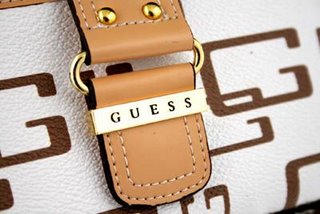

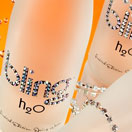



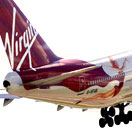
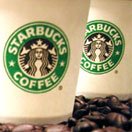



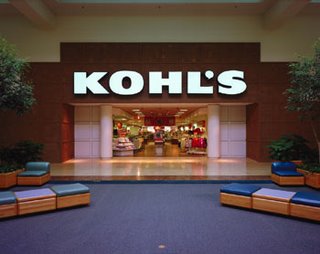
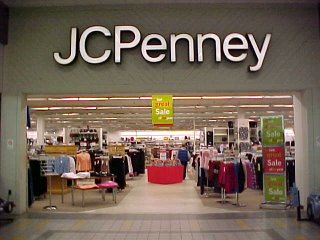
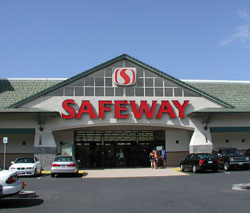




 Popular jeans brand 7 For All Mankind is the top denim brand for Gen Y consumers ages 17-26. At least that's the latest according to a study conducted for the Retail Advertising and Marketing Association by SLANT, a marketing firm headquartered in Chicago. Other popular brands among this group include Diesel, Levis, Lucky and Gap.
Popular jeans brand 7 For All Mankind is the top denim brand for Gen Y consumers ages 17-26. At least that's the latest according to a study conducted for the Retail Advertising and Marketing Association by SLANT, a marketing firm headquartered in Chicago. Other popular brands among this group include Diesel, Levis, Lucky and Gap.